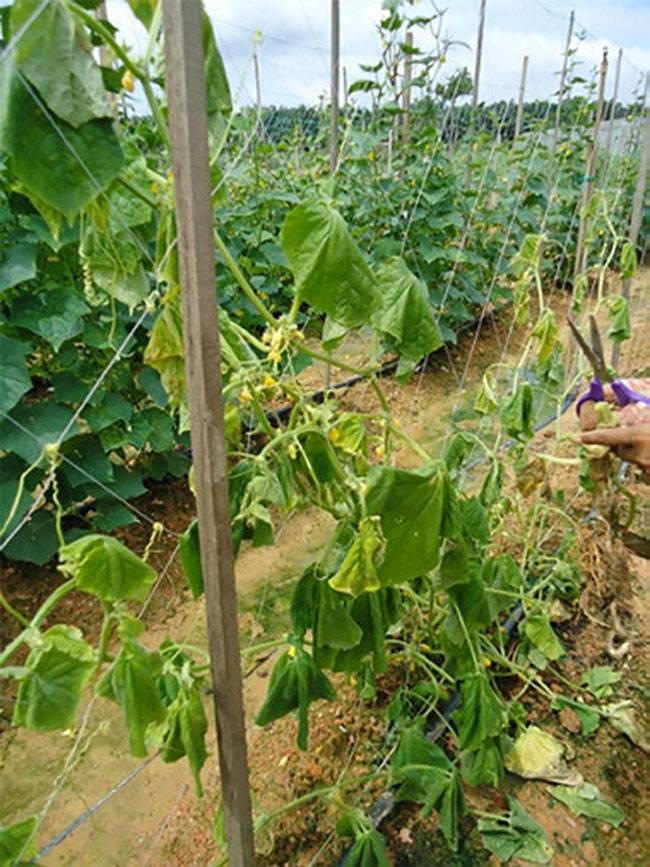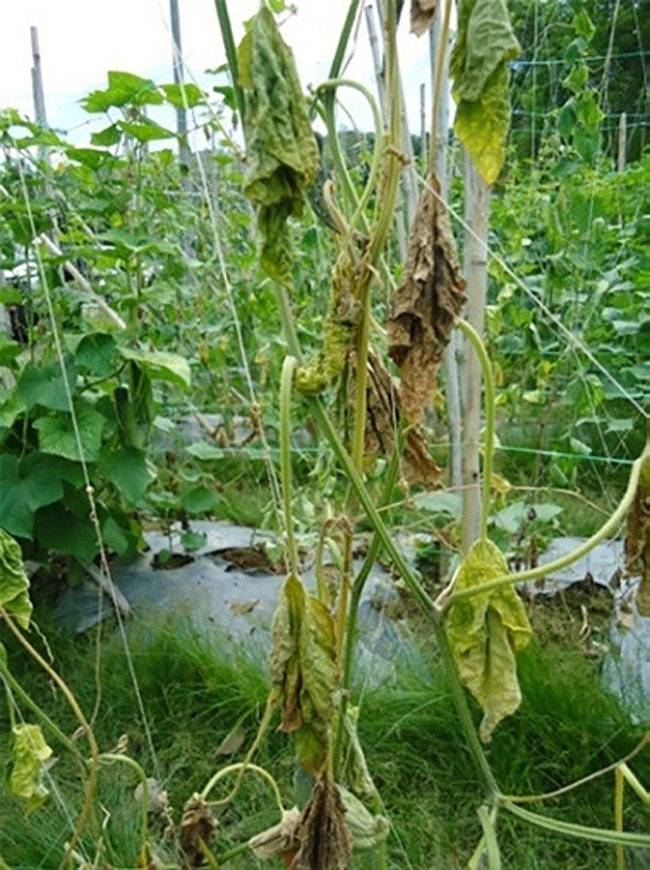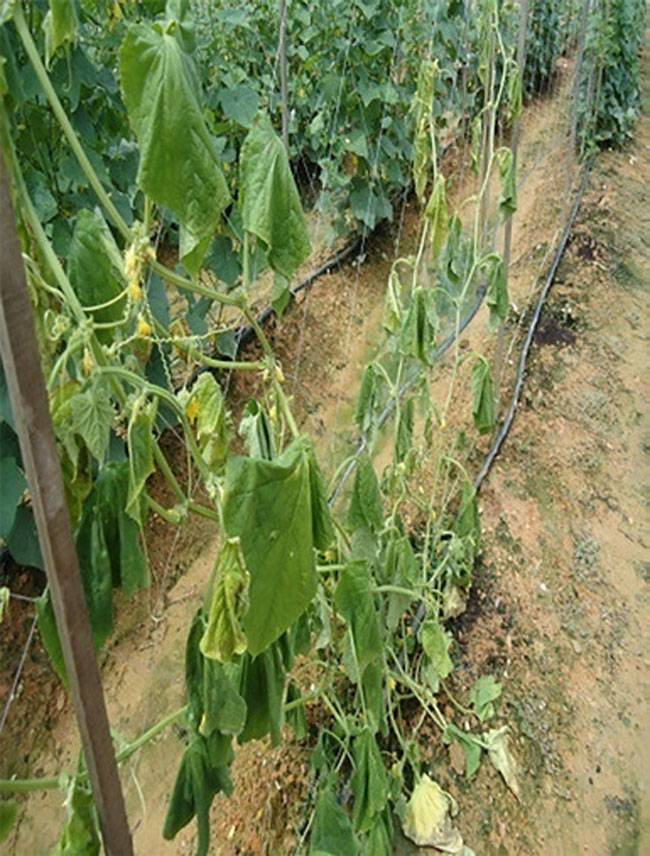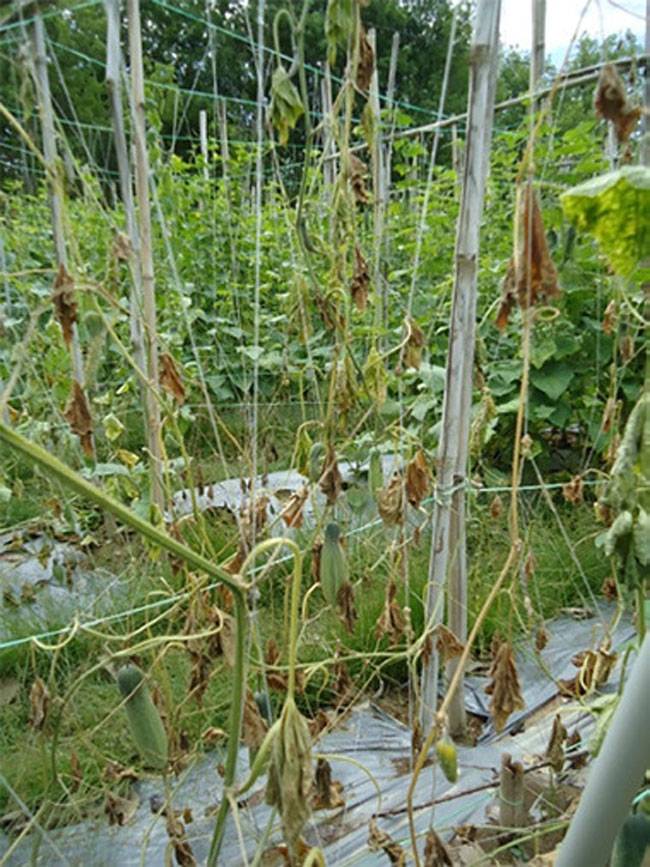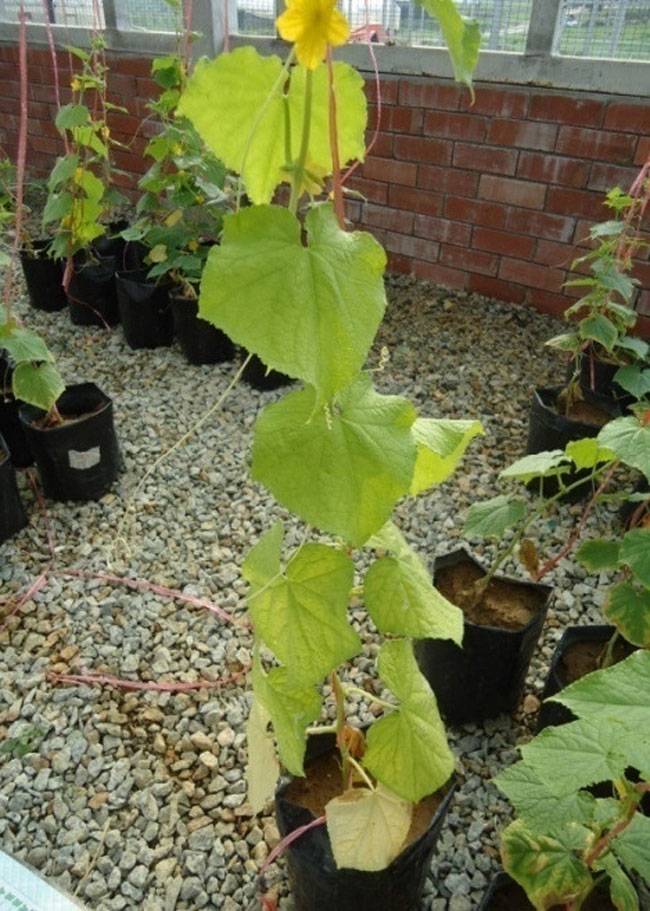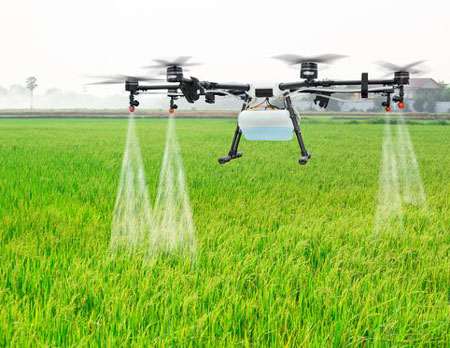Fusarium wilt is a serious vascular disease caused by soil-borne fungi that clog water-conducting tissues, leading to wilting and eventual death of the plant. It poses a significant threat to cucumber cultivation and can result in substantial crop losses in commercial fields, greenhouses, and home gardens. Understanding its symptoms, epidemiology, and host range is critical for effective management.
Key Points on Fusarium Wilt of Cucumber
1. Hosts
- Primary Hosts: Cucumber is the primary host; watermelon and muskmelon are moderately sensitive.
- Other Hosts: Commonly affects solanaceous crops like tomato, eggplant, and pepper.
- Alternative Hosts: Weeds such as pigweed, mallow, and crabgrass can harbor the pathogen.
2. Symptoms
- Early Symptoms:
- Slight wilting of entire plants or parts of plants during the hottest part of the day.
- Plants may temporarily recover during cooler evenings or rainy periods.
- Progression:
- Permanent wilting.
- Yellowing of leaves, often starting on one side of the plant.
- Browning (necrosis) of leaf tips and interveinal areas.
- Entire plants eventually turn yellow and necrotic.
- Advanced Indicators:
- Vascular discoloration extending 8–10 nodes, observable in stem cross-sections.
- Pre-emergence damping-off and root rot may occur in seedlings.
- Gummosis and stem splitting in severe cases.
3. Favorable Conditions
- Soil moisture: Abundant soil moisture promotes disease development.
- Temperature: Disease thrives at 24–27°C. The fungus does not grow above 37°C.
4. Impact
- The disease often leads to complete plant failure, particularly under favorable conditions.
- Crop losses affect both commercial and residential cucumber production.
5. Management Tips
- Cultural Practices:
- Rotate crops with non-host plants.
- Remove infected plant debris to reduce inoculum levels in the soil.
- Avoid planting cucumbers in fields previously affected by Fusarium wilt.
- Resistant Varieties: Planting resistant cucumber cultivars can mitigate disease incidence.
- Soil Treatment: Use of fungicides, solarization, or biofumigation may help reduce soil-borne pathogens.
Conclusion
Fusarium wilt of cucumber is a devastating disease that thrives under warm and moist conditions. Recognizing early symptoms and adopting preventive strategies can help manage the disease and minimize losses. Integrated disease management practices, including crop rotation and resistant varieties, are essential for sustainable cucumber production.
